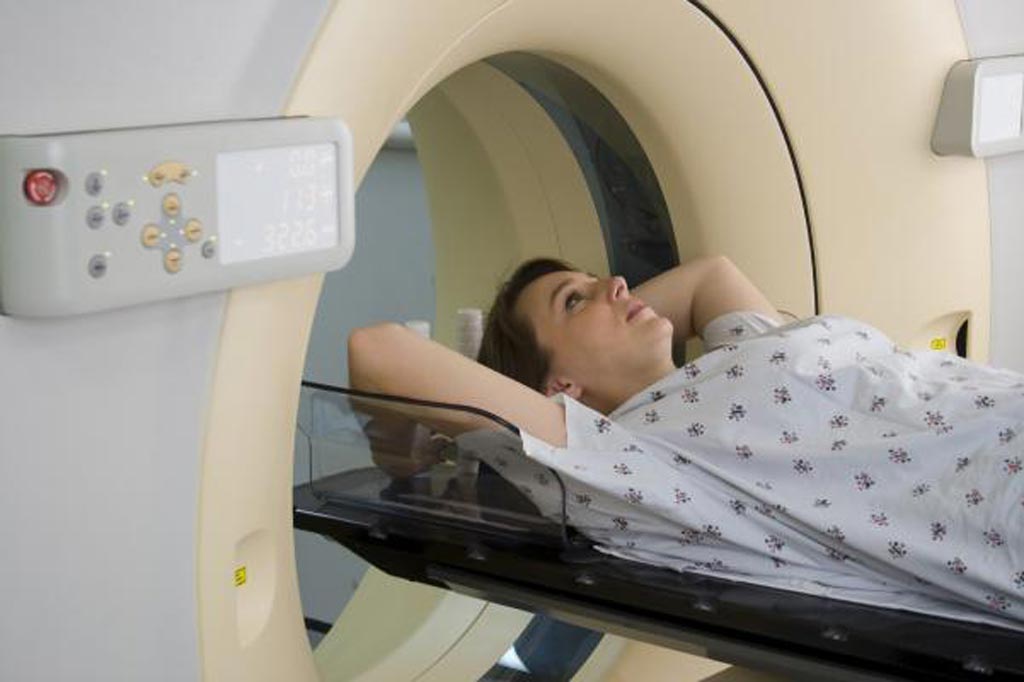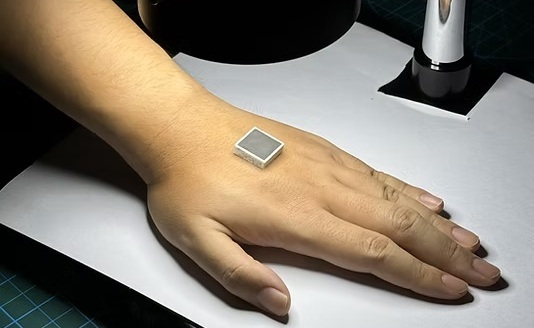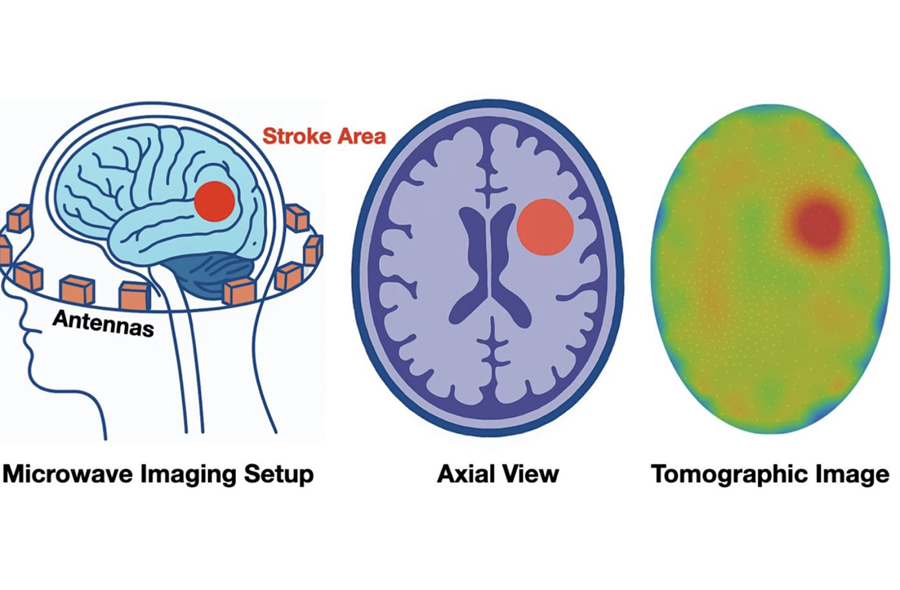Global Radiation Therapy Market to Reach USD 8.6 Billion by 2026 on Back of Product Approvals
|
By MedImaging International staff writers Posted on 18 Mar 2020 |

Illustration
The global radiation therapy market is projected to record a steady growth rate of 5.2% from 2018 to 2026 to reach USD 8.6 billion by 2026, driven by a surge in product approvals, increased expenditure on healthcare, high incidence of cancer, growing preference for non-invasive treatment procedures, technological advancements, and notable research and development activities.
These are the latest findings of Transparency Market Research (Albany NY, USA), a next-generation market intelligence provider.
A wave of therapeutic and diagnostic technologies is paving the way for higher growth in oncology, thus aiding radiation therapy and driving market growth. However, some key restraints are likely to impede market growth, including the high cost of treatment which makes it unaffordable for a large chunk of the population in the developing region, particularly in countries where healthcare cover is low. The market growth is also likely to be hampered by low awareness levels, as patients are sometime unaware of cancer cells wreaking havoc on their body until it is too late, leading to a late diagnosis. Radiation also takes a toll on the body and its side-effects can be difficult to tolerate for some patients, thus affecting the growth of the radiation therapy market.
Based on end-user, hospitals are expected to dominate the global radiation therapy market during the forecast period due to robust infrastructure with state of the art-equipment and services that are usually available. On the basis of type, the external beam radiation therapy segment is expected to account for the largest market share due to a stream of notable approvals and significant technological advancements.
Geographically, the Asia Pacific region is one of the biggest revenue generators in the global radiation therapy market, led by Japan, China, and India on the back of their rising levels of disposable income and improving healthcare infrastructure. In India, increased healthcare expenses and efforts to provide insurance cover to more people will contribute positively to the growth of the Asia Pacific radiation therapy market. Additionally, the large patient pool and increasing awareness about cancer symptoms and diagnosis will also fuel the growth of the radiation therapy market in the region.
Related Links:
Transparency Market Research
These are the latest findings of Transparency Market Research (Albany NY, USA), a next-generation market intelligence provider.
A wave of therapeutic and diagnostic technologies is paving the way for higher growth in oncology, thus aiding radiation therapy and driving market growth. However, some key restraints are likely to impede market growth, including the high cost of treatment which makes it unaffordable for a large chunk of the population in the developing region, particularly in countries where healthcare cover is low. The market growth is also likely to be hampered by low awareness levels, as patients are sometime unaware of cancer cells wreaking havoc on their body until it is too late, leading to a late diagnosis. Radiation also takes a toll on the body and its side-effects can be difficult to tolerate for some patients, thus affecting the growth of the radiation therapy market.
Based on end-user, hospitals are expected to dominate the global radiation therapy market during the forecast period due to robust infrastructure with state of the art-equipment and services that are usually available. On the basis of type, the external beam radiation therapy segment is expected to account for the largest market share due to a stream of notable approvals and significant technological advancements.
Geographically, the Asia Pacific region is one of the biggest revenue generators in the global radiation therapy market, led by Japan, China, and India on the back of their rising levels of disposable income and improving healthcare infrastructure. In India, increased healthcare expenses and efforts to provide insurance cover to more people will contribute positively to the growth of the Asia Pacific radiation therapy market. Additionally, the large patient pool and increasing awareness about cancer symptoms and diagnosis will also fuel the growth of the radiation therapy market in the region.
Related Links:
Transparency Market Research
Latest Industry News News
- GE HealthCare and NVIDIA Collaboration to Reimagine Diagnostic Imaging
- Patient-Specific 3D-Printed Phantoms Transform CT Imaging
- Siemens and Sectra Collaborate on Enhancing Radiology Workflows
- Bracco Diagnostics and ColoWatch Partner to Expand Availability CRC Screening Tests Using Virtual Colonoscopy
- Mindray Partners with TeleRay to Streamline Ultrasound Delivery
- Philips and Medtronic Partner on Stroke Care
- Siemens and Medtronic Enter into Global Partnership for Advancing Spine Care Imaging Technologies
- RSNA 2024 Technical Exhibits to Showcase Latest Advances in Radiology
- Bracco Collaborates with Arrayus on Microbubble-Assisted Focused Ultrasound Therapy for Pancreatic Cancer
- Innovative Collaboration to Enhance Ischemic Stroke Detection and Elevate Standards in Diagnostic Imaging
- RSNA 2024 Registration Opens
- Microsoft collaborates with Leading Academic Medical Systems to Advance AI in Medical Imaging
- GE HealthCare Acquires Intelligent Ultrasound Group’s Clinical Artificial Intelligence Business
- Bayer and Rad AI Collaborate on Expanding Use of Cutting Edge AI Radiology Operational Solutions
- Polish Med-Tech Company BrainScan to Expand Extensively into Foreign Markets
- Hologic Acquires UK-Based Breast Surgical Guidance Company Endomagnetics Ltd.
Channels
Radiography
view channel
AI Detects Early Signs of Aging from Chest X-Rays
Chronological age does not always reflect how fast the body is truly aging, and current biological age tests often rely on DNA-based markers that may miss early organ-level decline. Detecting subtle, age-related... Read more
X-Ray Breakthrough Captures Three Image-Contrast Types in Single Shot
Detecting early-stage cancer or subtle changes deep inside tissues has long challenged conventional X-ray systems, which rely only on how structures absorb radiation. This limitation keeps many microstructural... Read moreMRI
view channel
Novel Imaging Approach to Improve Treatment for Spinal Cord Injuries
Vascular dysfunction in the spinal cord contributes to multiple neurological conditions, including traumatic injuries and degenerative cervical myelopathy, where reduced blood flow can lead to progressive... Read more
AI-Assisted Model Enhances MRI Heart Scans
A cardiac MRI can reveal critical information about the heart’s function and any abnormalities, but traditional scans take 30 to 90 minutes and often suffer from poor image quality due to patient movement.... Read more
AI Model Outperforms Doctors at Identifying Patients Most At-Risk of Cardiac Arrest
Hypertrophic cardiomyopathy is one of the most common inherited heart conditions and a leading cause of sudden cardiac death in young individuals and athletes. While many patients live normal lives, some... Read moreUltrasound
view channel
Wearable Ultrasound Imaging System to Enable Real-Time Disease Monitoring
Chronic conditions such as hypertension and heart failure require close monitoring, yet today’s ultrasound imaging is largely confined to hospitals and short, episodic scans. This reactive model limits... Read more
Ultrasound Technique Visualizes Deep Blood Vessels in 3D Without Contrast Agents
Producing clear 3D images of deep blood vessels has long been difficult without relying on contrast agents, CT scans, or MRI. Standard ultrasound typically provides only 2D cross-sections, limiting clinicians’... Read moreNuclear Medicine
view channel
PET Imaging of Inflammation Predicts Recovery and Guides Therapy After Heart Attack
Acute myocardial infarction can trigger lasting heart damage, yet clinicians still lack reliable tools to identify which patients will regain function and which may develop heart failure.... Read more
Radiotheranostic Approach Detects, Kills and Reprograms Aggressive Cancers
Aggressive cancers such as osteosarcoma and glioblastoma often resist standard therapies, thrive in hostile tumor environments, and recur despite surgery, radiation, or chemotherapy. These tumors also... Read more
New Imaging Solution Improves Survival for Patients with Recurring Prostate Cancer
Detecting recurrent prostate cancer remains one of the most difficult challenges in oncology, as standard imaging methods such as bone scans and CT scans often fail to accurately locate small or early-stage tumors.... Read moreGeneral/Advanced Imaging
view channel
AI-Based Tool Accelerates Detection of Kidney Cancer
Diagnosing kidney cancer depends on computed tomography scans, often using contrast agents to reveal abnormalities in kidney structure. Tumors are not always searched for deliberately, as many scans are... Read more
New Algorithm Dramatically Speeds Up Stroke Detection Scans
When patients arrive at emergency rooms with stroke symptoms, clinicians must rapidly determine whether the cause is a blood clot or a brain bleed, as treatment decisions depend on this distinction.... Read moreImaging IT
view channel
New Google Cloud Medical Imaging Suite Makes Imaging Healthcare Data More Accessible
Medical imaging is a critical tool used to diagnose patients, and there are billions of medical images scanned globally each year. Imaging data accounts for about 90% of all healthcare data1 and, until... Read more




















